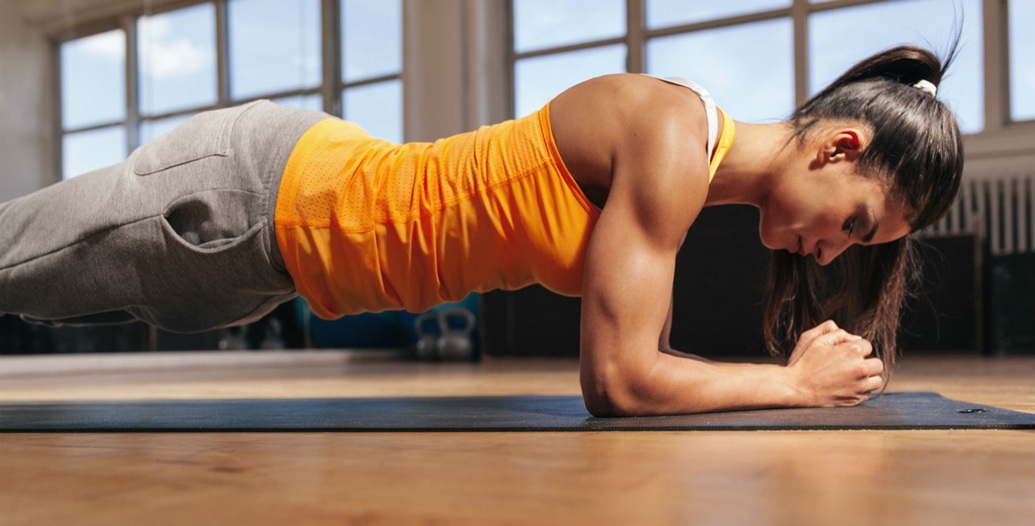The Benefits of Forearm Planks
Forearm planks are one of the most effective bodyweight exercises for strengthening the core.
Unlike crunches or sit-ups, which primarily target the rectus abdominis, planks engage a variety of muscle groups, including the transverse abdominis, obliques, lower back, shoulders, and glutes.
This exercise improves core stability, which is crucial for overall strength, posture, and injury prevention.
One of the primary benefits of forearm planks is their ability to enhance muscular endurance. Holding a plank position for extended periods forces the muscles to remain engaged for a prolonged duration, improving stamina and resistance to fatigue.
Additionally, planks promote better posture by reinforcing proper spinal alignment. This is especially beneficial for individuals who spend long hours sitting at a desk, as poor posture can lead to back and neck pain.
Forearm planks also contribute to improved balance and coordination. Because they require the activation of multiple muscle groups simultaneously, they enhance neuromuscular coordination, leading to better control over body movements.
Furthermore, they can aid in reducing lower back pain by strengthening the muscles that support the lumbar spine.
Another advantage of incorporating planks into a fitness routine is the minimal risk of injury compared to other core exercises.
Since they do not involve repetitive spinal flexion, like sit-ups, they place less strain on the lower back, making them a safer alternative for those with preexisting back conditions.

How Long Should You Hold a Forearm Plank?
The optimal duration for holding a forearm plank depends on an individual’s fitness level and goals.
Beginners may start by holding a plank for 20 to 30 seconds and gradually increase the time as their core strength improves. Intermediate individuals can aim for 45 seconds to a minute, while advanced athletes may hold a plank for two minutes or longer.
Rather than focusing solely on duration, it is important to prioritize proper form. Maintaining a straight line from head to heels, engaging the core, and avoiding sagging or arching in the lower back are essential to reaping the full benefits of the exercise. Holding a plank with poor form for an extended period is less effective and may lead to injury.
For those looking to progress, incorporating sets of shorter, high-quality planks can be more beneficial than attempting to hold a single plank for an extended period.
For example, performing three sets of 30 to 45 seconds with brief rests in between can be an efficient way to build core strength.

Plank Variations
Planks are highly versatile, and there are numerous variations that target different muscle groups and increase the difficulty level. Some of the most common plank variations include:
- Side Plank: This variation shifts the focus to the obliques, improving lateral core stability. It is performed by balancing on one forearm and stacking the feet while keeping the body in a straight line.
- Extended Arm Plank: Also known as the straight-arm plank, this variation places more emphasis on the shoulders and upper body, making it a great progression from the forearm plank.
- Plank with Shoulder Taps: Adding shoulder taps to a plank challenges balance and coordination by requiring one hand to leave the ground momentarily.
- Plank with Leg Lift: Lifting one leg off the ground increases the demand on the core and glutes, making this variation more challenging.
- Dynamic Planks: Movements such as walking planks (transitioning from forearm to straight-arm position) or plank jacks (jumping the feet apart and together) add a cardio component to the exercise.
- Stability Ball Plank: Performing a plank with the forearms resting on a stability ball increases instability, forcing the core muscles to work harder to maintain balance.
- Side Plank with Rotation: This advanced variation adds movement by rotating the torso, engaging the obliques even more intensely.
- Reverse Plank: Unlike traditional planks, the reverse plank is performed facing upward, engaging the lower back, glutes, and hamstrings.
Each of these variations can be modified to match different fitness levels, allowing for progressive overload and continued muscle development.
Planks vs. Push-Ups
Planks and push-ups are both fundamental bodyweight exercises, but they serve different purposes and engage muscles in distinct ways.
While planks primarily focus on isometric core engagement, push-ups incorporate dynamic movement, targeting the chest, triceps, and shoulders in addition to the core.
One of the key differences between the two exercises is the type of muscle activation. Planks involve static muscle contraction, meaning the muscles are engaged without changing length.
This helps improve muscular endurance and stability. Push-ups, on the other hand, involve both concentric and eccentric contractions, which build strength and muscle mass in the upper body.

From a functional fitness perspective, push-ups have a greater carryover to movements that require pressing strength, such as lifting and pushing objects.
Planks, however, are superior for developing core stability, which translates into better posture, balance, and injury prevention in everyday activities.
In terms of difficulty, planks are often more accessible to beginners because they do not require upper-body strength.
Push-ups demand sufficient chest, triceps, and shoulder strength to perform correctly. However, both exercises can be modified to suit different fitness levels.
For instance, push-ups can be done on the knees or against a wall, while planks can be performed with the knees on the ground for reduced intensity.
When it comes to calorie burn, push-ups generally expend more energy than planks because they involve movement and recruit larger muscle groups.
However, incorporating dynamic plank variations, such as mountain climbers or plank jacks, can elevate the heart rate and increase caloric expenditure.
For a well-rounded workout, combining both planks and push-ups is ideal. While planks build the foundational core strength needed for proper push-up form, push-ups enhance upper-body strength and endurance.
Including both exercises in a fitness routine ensures balanced muscle development and improved overall performance.
Conclusion
Forearm planks are a highly effective exercise for building core strength, improving posture, and enhancing overall stability.
The duration for holding a plank varies depending on an individual’s fitness level, but maintaining proper form is crucial for maximizing benefits. With numerous variations available, planks can be tailored to suit different goals and difficulty levels.
While planks focus on isometric core engagement, push-ups provide dynamic upper-body strength training. Both exercises offer unique advantages, and incorporating them together in a fitness regimen can lead to well-rounded strength and endurance.
Whether aiming for better core stability, injury prevention, or improved athletic performance, planks remain a fundamental and versatile exercise choice.


